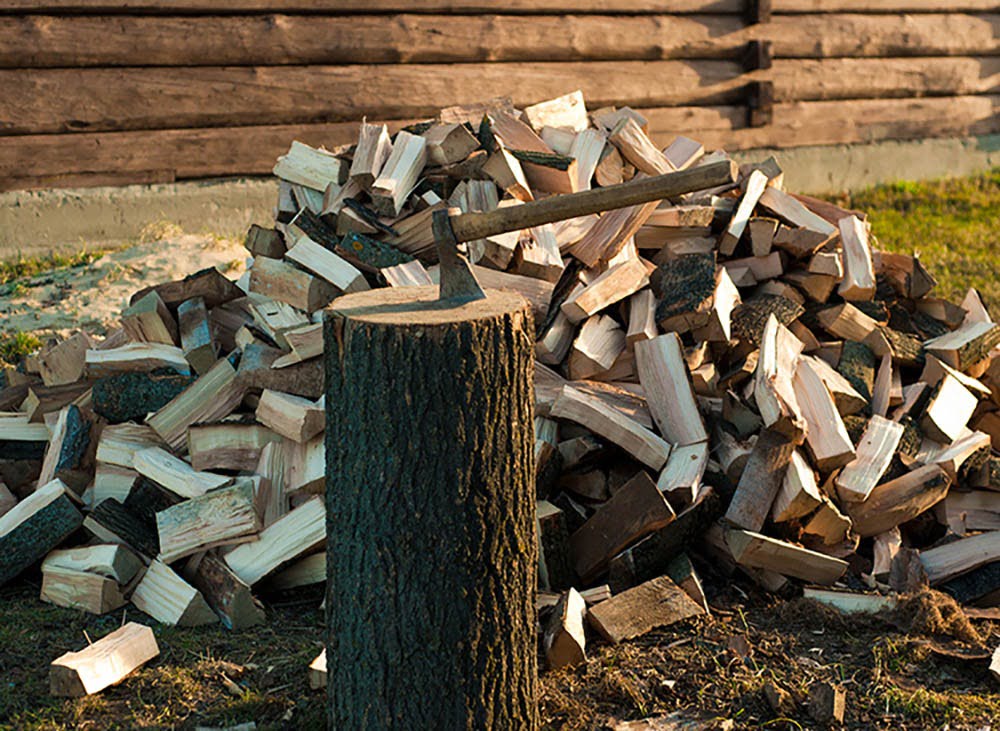Hackberry wood is an excellent firewood. It burns well, is hard-wearing, and makes excellent heat. The hackberry tree is hardy and grows in many parts of the country. It’s also very light, making it ideal for carrying around or transporting.
But Hackberry wood is not as commonly used as hardwood firewood. Some people have reservations about using it for firewood because of its softwood classification.
Read this blog on hackberry wood to know more about the characteristics of hackberry wood and whether it’s good firewood or not.
Characteristics of Hackberry Wood
Hackberry is a dense hardwood with a reddish-brown color. It has a straight grain and is easy to work with. Hackberry is popular for use in furniture, cabinets, and other wooden products due to its durability and hardwood characteristics.
Hackberry wood has a low moisture content, making it difficult to decay. This makes the wood resistant to insects and fungus. The wood also has a low smoking point, so it’s good for fireplace use without sacrificing the taste of food cooked on the firewood.
Overall, hackberry is a versatile hardwood with unique characteristics that make it an excellent choice for many applications.
Is Hackberry A Hardwood or Softwood?
Hackberry is a hardwood tree commonly found in the U.S. It is a member of the Buckthorn family and is also known as hackberry or honeyberry.
Though hackberry is classified as hardwood, it doesn’t possess the same properties as other hardwoods. As a result, hackberry firewood does not last as long as hardwood firewood when exposed to heat. If you are looking for firewood that is resistant to fire, try choosing oak or hickory.
Hackberries have light gray bark and leafy green foliage. They are smaller than oaks and hickory trees and can grow up to 50 feet tall and 20 feet wide. They have fragrant, white flowers followed by red fruit that turn black when ripe.
Unlike oaks and hickory trees, hackberries do not develop many separate trunks after they reach maturity and instead keep their diameter uniform throughout their life span.
Is Hackberry Good Firewood?

Hackberry trees are a species of oak tree in the genus Celtis. The wood from hackberry trees is low in sugar and high in cellulose, making it good firewood.
Because hackberry wood is not subject to insect infestation, it is often used in construction projects that involve exposed wood surfaces or near water sources.
Hackberry trees are fast-growing, making them a good choice for areas that are prone to wildfires. As with any firewood, be sure to properly treat hackberry wood before using it as firewood.
Hackberry BTUs
– The BTUs of Hackberry firewood are 2,500-3,000.
– This type of firewood has a hardwood bark and a dense inner wood. It’s often used for cooking stews and casseroles.
– Drying hackberry firewood can add a woody aroma to your fire and make your campfire more enjoyable. However, it’s important to dry hackberry firewood indoors or in an air-conditioned environment to prevent mold growth.
– Once hackberry firewood has been properly dried, it can be used as a fuel source in emergency situations or with low access to firewood.
– Hackberry firewood is safe to use when properly dried and stored. It burns cleanly with little ash output and provides good heat output for its size. Additionally, hackberry firewood contains calcium, which helps regulate the water content of wood during drying, making it less prone to catch fire easily.
– Lastly, hackberry fire btu is environmentally friendly and sustainable due to its low moisture content and hardwood bark. This makes it easy to harvest and allows for minimal environmental impact from its harvesting process.
It’s a good option for those looking for a high-heat fuel source on the trail or at the campsite.
Benefits of Burning Hackberry
Hackberry is a low-sulfur hardwood that produces little smoke and burns very hot. This makes it a good choice for fireplace use. It’s also easy to ignite and stays burning longer than other firewood types, making it a good choice for outdoor grilling and fire pit use.
Hackberry is harvested from ecosystems that are naturally sustainable, meaning it can be harvested for years without depleting the resource. This makes hackberry an affordable firewood option that is available in most parts of the country.
Overall, hackberry is a great firewood option for those looking for hardwood with minimal pollution and environmental impact.
Drawbacks of Burning Hackberry
Hackberry is a firewood alternative that has become more popular in recent years. But before you begin to use hackberry as your firewood option, it’s important to understand the potential drawbacks of using this type of wood.
Hackberry firewood is not renewable and contains high levels of chemicals and other toxins. This can be harmful to your health and environment, especially if hackberry firewood is burned carelessly or excessively.
Also, burning hackberry can damage your property as it ignites easily and causes smoke that may be hard to control. Finally, hackberry firewood isn’t a sustainable firewood option as it takes years to mature and requires large amounts of resources to produce.
Hackberry Firewood FAQs
Hackberry firewood is hardwood wood with berry-like fruit on the wood. It is found in parts of the eastern United States, such as Virginia, Maryland, and North Carolina. Hackberry firewood has a distinctive fragrance and a bright red color. It is used for cooking stews and hot dishes. It can be cut into pieces for use as firewood or ground into pulp to use as hot water or food seasoning.
The hackberry tree is an evergreen tree that grows to heights of 40 feet. Its bark is rough and grayish-brown and its leaves are green, oval-shaped, and leathery.
Frequently Asked Questions
What is Hackberry?
Hackberry is a type of hardwood tree that is native to the eastern United States. The tree is used for lumber, pulp, and fuel, among other things. The wood of the hackberry tree is hard, dense, and has a reddish hue.
How to identify hackberry firewood?
Look for it in hardwood forests with sandy soil that has good drainage. The hackberry tree has berries on its branches that look like cherry tomatoes and its bark can be either gray-brown or reddish-brown.
How to cut hackberry firewood? Hackberries are hard wood so they can be cut into pieces with a saw or ax. Use a sharp blade to make clean cuts through the bark, avoiding splinters. Avoid hackberries that are drying out and those that appear shriveled or sickly.
How to store hackberry firewood?
Hackberries firewood should be dried completely before storing. It can be stacked on racks or shelves in a smokehouse or drying shed where the air temperature remains between 50°F and 80°F.
To avoid damaging hackberries firewood, don’t stack it too high, don’t let it freeze, avoid storing near heat sources such as fireplace grates or other items, and consider using fireguards when burning hackberries indoors.
How is Hackberry different than other types of firewood?
Hackberry is a dense hardwood that is used for furniture and flooring. It is not as common as other types of firewood, so it may be more expensive. Hackberry also has a lower heat value than other types of firewood, so it requires less fuel to cook with.
Why is Hackberry good firewood?
Hackberry trees are good firewood because of their dense wood and sap. The wood of Hackberry trees is hard and dense, making it resistant to decay and good for heating and cooking purposes. In addition, the sap of Hackberry trees contains natural chemicals that make it good firewood.
Conclusion
You now know hackberry wood is an excellent firewood. It is easily available, burns longer, and does not splinter or warp. You can use hackberry wood for fuelwood, firewood, or firewood for your fireplace.
It can be used for barbecuing, heating your home, and lighting a campfire. And if you’re looking to find hackberry wood in your area, we’ve got a solution to help you out. Simply share this blog on Facebook and tell your friends about it.
Also read: Sycamore Firewood





